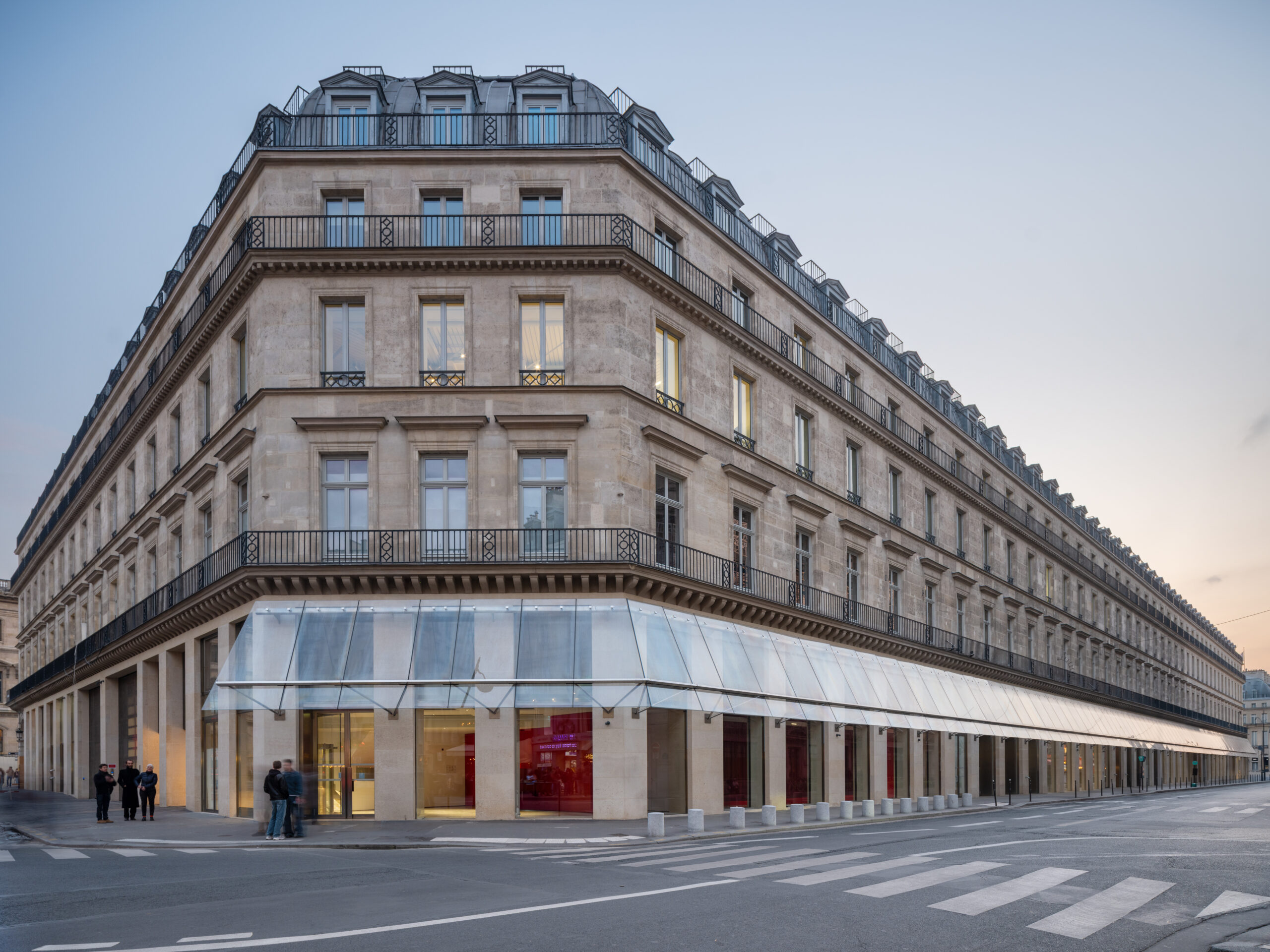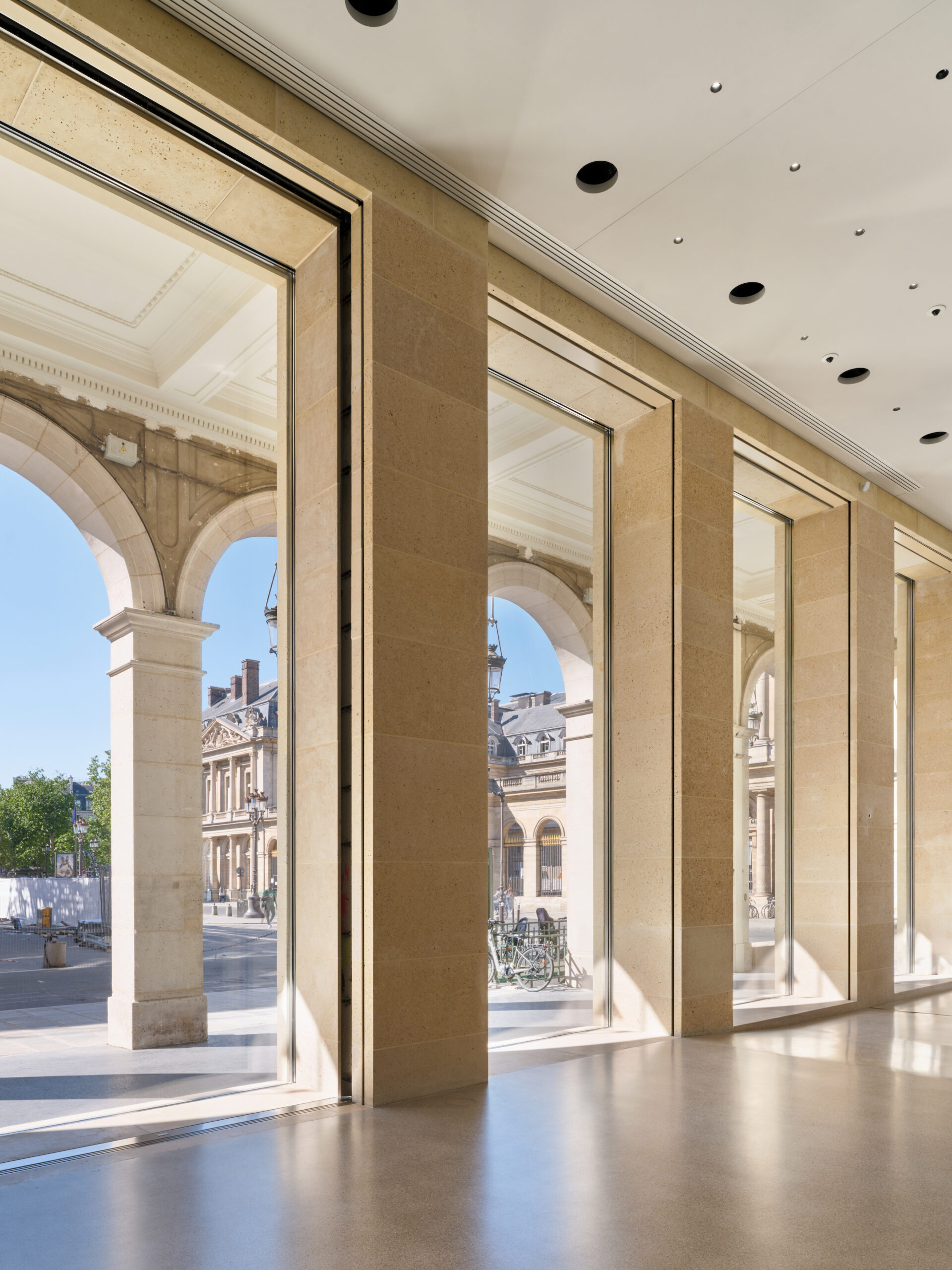News

Truth be told, I don’t get art. Or at least, not in the way I wish I did. I’ve stood in front of installations that people describe as “transformative” and felt nothing but confusion — maybe mild admiration for whoever managed to sell a blank canvas for six figures. But something shifted when I stepped into the new Fondation Cartier pour l’art contemporain, the house that Jean Nouvel rebuilt at 2 Place du Palais-Royal. I understood, for once, the scale of it all (literally and emotionally).
The space doesn’t ease you in; it absorbs you. From the moment you step past the glass façade, Paris disappears, and light takes over. Everything feels intentionally oversized: the ceilings, the reflections, the air between one artwork and the next. Nouvel’s redesign turns architecture into performance with five mobile platforms that move like stages, reshaping the exhibition in real time. It’s the kind of building that doesn’t just host art but becomes part of it.
![]()
And it needs to be. The opening exhibition, Exposition Générale, brings together nearly six hundred works by over a hundred artists from around the world – an impressive catalogue of four decades of Fondation Cartier’s collaborations. There’s no single direction, and that’s the point. It’s divided loosely into themes – architecture, nature, material, and imagination – but wandering through it feels more like flipping through someone’s subconscious than a curated show.
One of the first rooms I walked into held a James Turrell light installation that turned an empty wall into pure colour. Nearby, Sarah Sze’s delicate chaos of objects felt like time frozen mid-breath. Then came Olga de Amaral’s golden weavings – tactile, luminous, unapologetically human – followed by a short film by David Lynch that made me both uncomfortable and oddly serene. I didn’t understand everything I saw, but for once, I didn’t need to. The space itself allowed for that kind of uncertainty; it made confusion feel like part of the experience.
Formafantasma, the Italian design duo behind the scenography, leaned into this idea of exploration. They played with transparency, layers, and materials that mirrored Nouvel’s own architectural language. At times, it felt like walking through a living archive — a reimagined encyclopaedia of modern creation where each floor hinted at a different question: how do we build, how do we coexist, how do we dream?
Outside, Paris carried on its usual hum bleeding faintly through the Fondation’s massive bay windows. Inside, everything slowed down and you could sense the intent behind Cartier’s approach to art, not as a sponsor or patron, but as an observer in dialogue with the world. Since Alain Dominique Perrin founded the institution in 1984, the Fondation Cartier has blurred boundaries between disciplines: art and science, cinema and craft, performance and philosophy. This new home amplifies that mission.

By the time I reached the top platform, the view unfolded almost like a metaphor: old Paris in one direction, a reflection of it in glass on the other. I caught myself smiling at the irony and while maybe you don’t need to get art to feel something from it. Maybe that’s the whole point. What Cartier has done here isn’t about luxury or legacy; but rather about curiosity and about creating a space that’s as fluid and alive as the people moving through it.
The Fondation Cartier redefines what it means to experience art in 2025: not as something to interpret, but as something to inhabit.